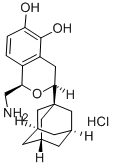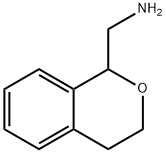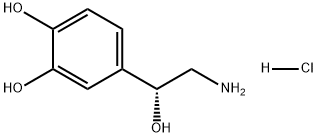A-77636 is a dopamine D1 receptor agonist (Ki = 40 nM). It induces activity equal to or greater than dopamine in an adenylate cyclase assay of D1 receptor activity in fish retina and rat caudate putamen (EC50s = 7.4 and 1.1 nM, respectively) but does not show agonist activity at D2 receptors expressed in MMQ cells when used at concentrations up to 10 μM. A-77636 (10 μM) induces desensitization of dopamine-stimulated cAMP accumulation and downregulation of D1 receptors, reducing D1 receptor expression by 79% in C-6 glioma cells expressing monkey D1A receptors. In a marmoset model of Parkinson''s disease induced by MPTP, A-77636 (3 μmol/kg, s.c.) increases locomotor activity 5.3-fold and reduces disease severity. Subcutaneous administration of A-77636 elicits cortical acetylcholine release at a dose of 1 μmol/kg. It also elicits over a 230% increase in cortical and hippocampal acetylcholine release when administered at a dose of 4 μmol/kg, an effect that is blocked by the D1 antagonist SCH 23390 .
The dopamine receptors play important role in cognition, memory, learning, and motor control (1). These receptors have been implicated as a therapeutic target for many psychiatric and neurological disorders. A 77636 Hydrochloride is a selective dopamine D1-like receptor agonist with antiparkinsonian properties (2,3).



